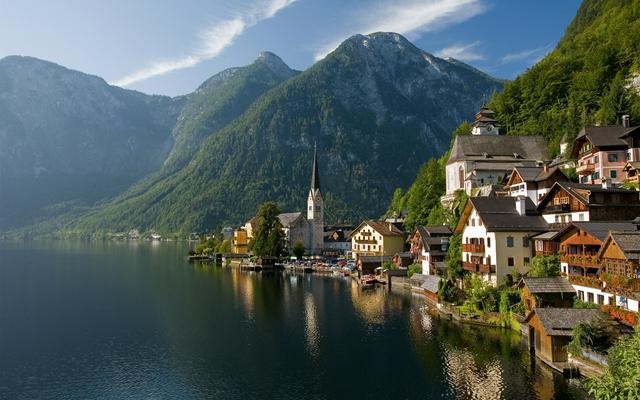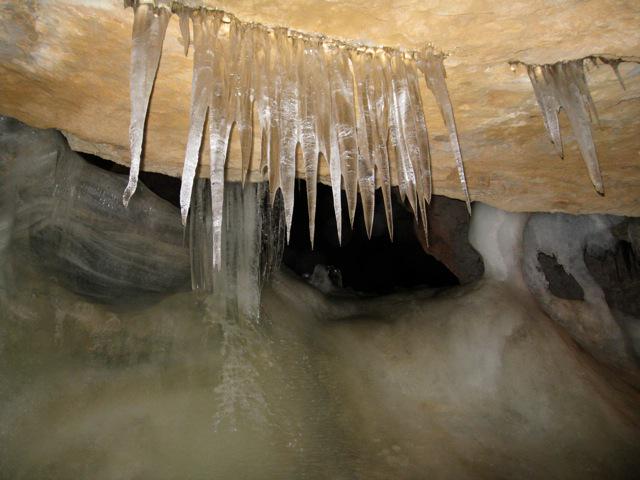Hallstatt is a small town overlooking the Hallstätter See (Lake Hallstatt) in the Salzkammergut, in the federal states Upper Austria of Austria.
The Hallstatt-Dachstein Salzkammergut area has been added to the UNESCO World Heritage List with the following inscription : "Human activity in the magnificent natural landscape of the Salzkammergut began in prehistoric times, with the salt deposits being exploited as early as the 2nd millennium BC. This resource formed the basis of the area’s prosperity up to the middle of the 20th century, a prosperity that is reflected in the fine architecture of the town of Hallstatt."
Hallstatt was the site of an early Iron Age culture from 800 to 400 BC, which is known as the Hallstatt Era. Hallstatt is considered to be the oldest still-inhabited village in Europe.
In addition to its ancient history, Hallstatt is spectacularly picturesque, due to its location on a narrow rocky west bank of the Hallstätter See with the sheer rising mountains behind it. Considered by some to be one of the most beautiful places on earth, Hallstatt is sometimes called "the pearl of Austria".
During the "off season", few shops and restaurants are open, and in some periods it might even be difficult to find a place to stay. Advance reservations would help ensure acceptable accommodations and avoid a worrisome search for an open hotel.

- Hallstatt Museum. A small but interesting museum displaying 7000 years of Hallstatt history.
- Ossuary. "Bone House" in English. Due to the extremely limited space in the cemetery, burials are only temporary. After 10-15 years the grave is opened and the bones are removed and bleached in the sun. Then they are stacked in the Beinhaus. It's not as gruesome as it sounds. Skulls are often decorated with painted flowers and the family name. This practice was stopped in the 1970s with the approval of cremation by the catholic church - you will see that those who remain buried all have recent dates of death.
- See the town. Enjoy the peace and quiet of the town. Have lunch in a cafe next to the lake and feed the swans. Window shop.
Hallstatt Museum. A small but interesting museum displaying 7000 years of Hallstatt history.
Ossuary. "Bone House" in English. Due to the extremely limited space in the cemetery, burials are only temporary. After 10-15 years the grave is opened and the bones are removed and bleached in the sun. Then they are stacked in the Beinhaus. It's not as gruesome as it sounds. Skulls are often decorated with painted flowers and the family name. This practice was stopped in the 1970s with the approval of cremation by the catholic church - you will see that those who remain buried all have recent dates of death.
See the town. Enjoy the peace and quiet of the town. Have lunch in a cafe next to the lake and feed the swans. Window shop.
- Visit the salt caves. Hallstatt Salt Worlds will take you into the more than 250-year-old salt mines to explore its underground beauty.
- Hallstättersee-Schifffahrt Hemetsberger, +43 6134 8228. Take a tour on the Lake of Hallstatt
- Hiking. There are many hiking trails in the mountains behind Hallstatt and throughout the Salzkammergut area. Ask at the Tourist Information office for a good hiking map as it can be easy to get lost in the rapidly changing alpine weather.
- Rock climbing.
- Children. There is a very nice lakeside playground about 500 m south of town with free WC, swimming, sunbathing, and the best views of town you'll see without going on a boat.

- Ice caves. In Dachstein, across the lake from Hallstatt, there are caves with ice waterfalls, lakes and ponds streaming through the limestone. Be sure to bring a jacket or sweater.
Visit the salt caves. Hallstatt Salt Worlds will take you into the more than 250-year-old salt mines to explore its underground beauty.
Hallstättersee-Schifffahrt Hemetsberger, +43 6134 8228. Take a tour on the Lake of Hallstatt
Hiking. There are many hiking trails in the mountains behind Hallstatt and throughout the Salzkammergut area. Ask at the Tourist Information office for a good hiking map as it can be easy to get lost in the rapidly changing alpine weather.
Rock climbing.
Children. There is a very nice lakeside playground about 500 m south of town with free WC, swimming, sunbathing, and the best views of town you'll see without going on a boat.
Ice caves. In Dachstein, across the lake from Hallstatt, there are caves with ice waterfalls, lakes and ponds streaming through the limestone. Be sure to bring a jacket or sweater.
Fish from Lake Hallstatt.
The restaurant in Gasthof Zauner has very good local fish on the menu.
The local Fassbier (tap beer) is from Salzburg: Stiegl. This is available throughout Austria, however. A more interesting regional beer to try is "König Ludwig Dunkel Brau" (King Ludwig Dark Brew) which is not as widely available, although you will find it also in Tirol, to the west. Stop by the local grocery store "Konsum" (which is in Lahn) to check out the local selection of beers and wines without paying restaurant prices.
